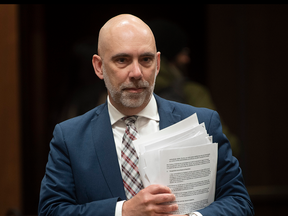Wildfires dominate the news across Canadian media outlets this week, with reports of unprecedented fire activity setting the tone for a season that could easily match or exceed the worst in decades. From detailed statistics to expert opinions and government responses, the focus remains on containment efforts, resource allocation, and potential long-term impacts.
Wildfires Are Poised to Set a New Record
Wildfires across Canada are expected to set a new record this season, with experts warning of significant environmental damage, air quality degradation, and economic losses. Fire activity is projected to reach levels not seen since the late 20th century, according to recent studies. The timing could not be worse, as extreme heat conditions have created ideal fire weather for spreading flames.
Causes Point to Climate Change
The increased frequency and intensity of wildfires are being linked to climate change, particularly rising temperatures and drier conditions. Without immediate action, experts warn, the situation could worsen, leading to more widespread damage and human health risks.
Government and Agency Responses
In response to the growing threat, Canada’s federal government has taken significant steps to address the crisis. Prime Minister Justin Trudeau has emphasized the need for coordinated efforts between provinces, territories, and federal agencies. The government has already approved requests from Quebec, Nova Scotia, and Alberta for federal assistance, including the deployment of military personnel.
Provincial and Territorial Coordination
Provinces and territories are playing a crucial role in managing the crisis, with many having their own fire management teams ready to act. Federal initiatives include strengthening emergency management capacity in First Nations communities and providing additional training for community-based firefighters. These measures aim to ensure that local expertise remains accessible during peak fire seasons.
Resources Allocated for Containment
The scale of the response is evident in the resources being allocated across the country. Canada has spent over $346 million on firefighting equipment and training programs, with an additional 100 personnel sent from the U.S., Australia, New Zealand, South Africa, and Costa Rica to assist in regions where conditions are most dire.
International Cooperation
The call for international help underscores the growing need for collaboration. Firefighters in Alberta have described shifting fire patterns as a major challenge, with changing weather and ground conditions making containment efforts more complex. The U.S. has expressed willingness to provide support if Canada’s requests cannot be fully met locally.
Public Awareness and Preparedness
Public awareness campaigns are also playing a key role in preparing for the coming wildfire season. schools and community organizations are being encouraged to participate in drills and education programs, with the goal of improving readiness among residents. Early detection systems, such as air quality monitors, are being promoted as critical tools in controlling fires before they spread uncontrollably.
Health Concerns Are Top of Mind
The health implications of wildfires are another pressing issue, with reports of respiratory illnesses linked to smoke inhalation. Public health officials are urging residents to stay indoors during high-risk periods and to take necessary precautions to protect their families.
Expert Opinions on the Future
Wildfire experts predict that this season could set a new historical benchmark for activity in the coming years, especially given the increasing frequency of extreme weather events. Without immediate action, the situation could spiral out of control, leading to widespread environmental damage and economic disruption.
call to Action
The stakes are high, with many stakeholders calling for urgent measures to address the root causes of the problem. In a bid to mitigate losses, provinces have already begun mobilizing resources to combat the flames on their soil. The federal government has also announced plans to tap into its contingency fund if the situation worsens beyond expectations.
Conclusion
This wildfire season is shaping up to be one of the most challenging in decades, with no clear end in sight. As communities prepare for what could be an unprecedented event, efforts to contain and combat the flames are more critical than ever. Whether through increased resource allocation, improved public awareness, or international collaboration, Canada must rise to the challenge if it is to emerge from this crisis unscathed.


























